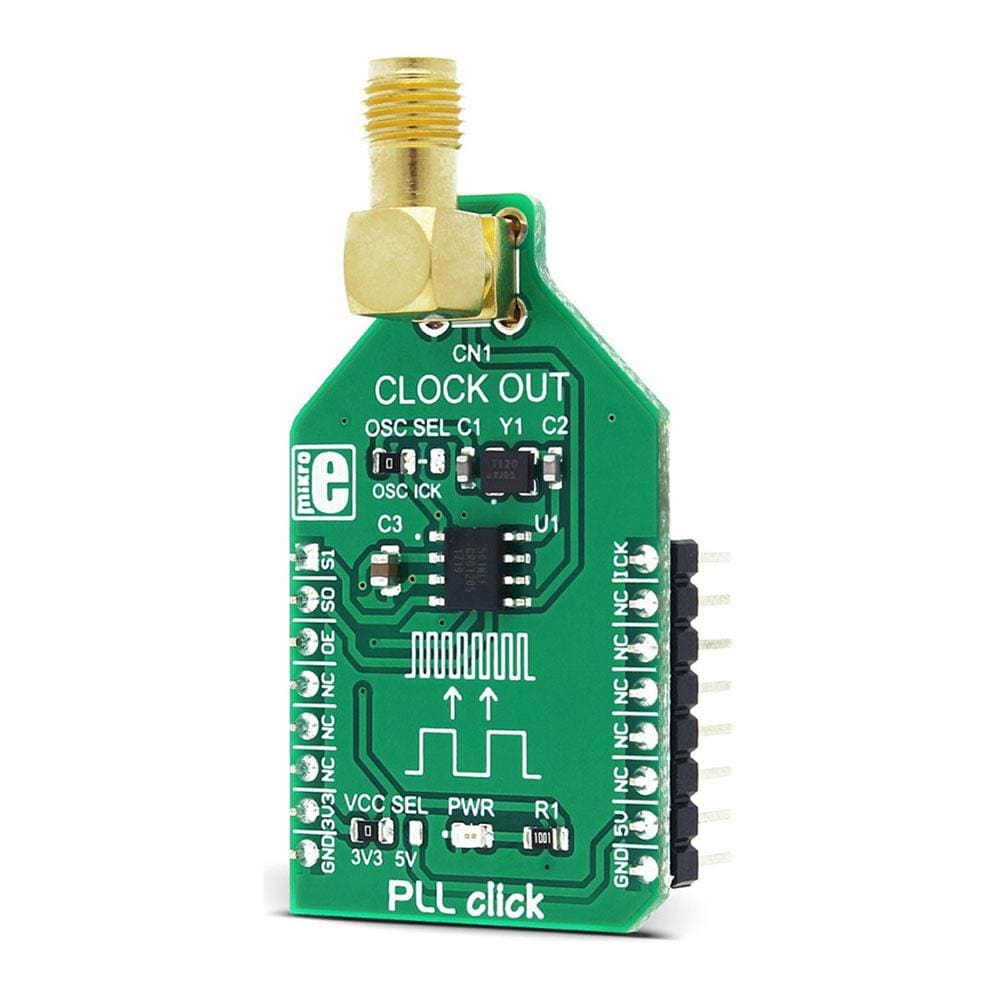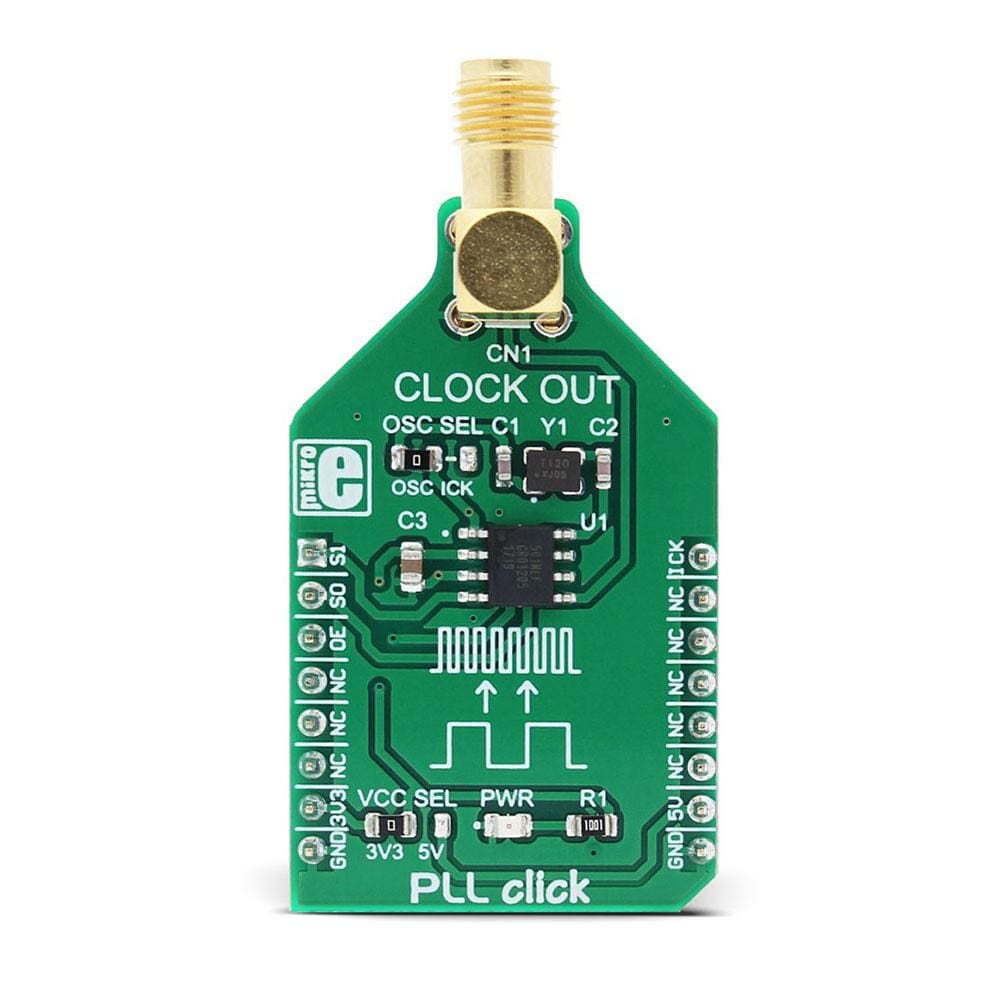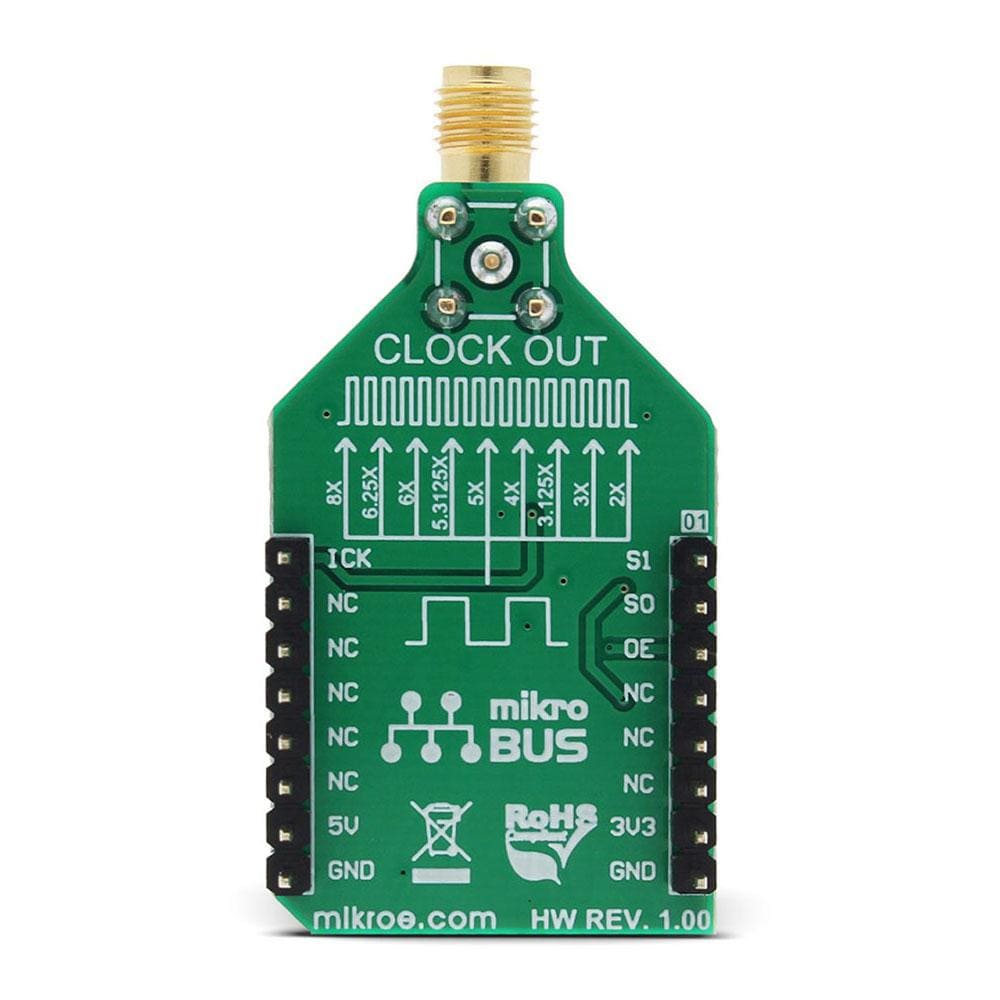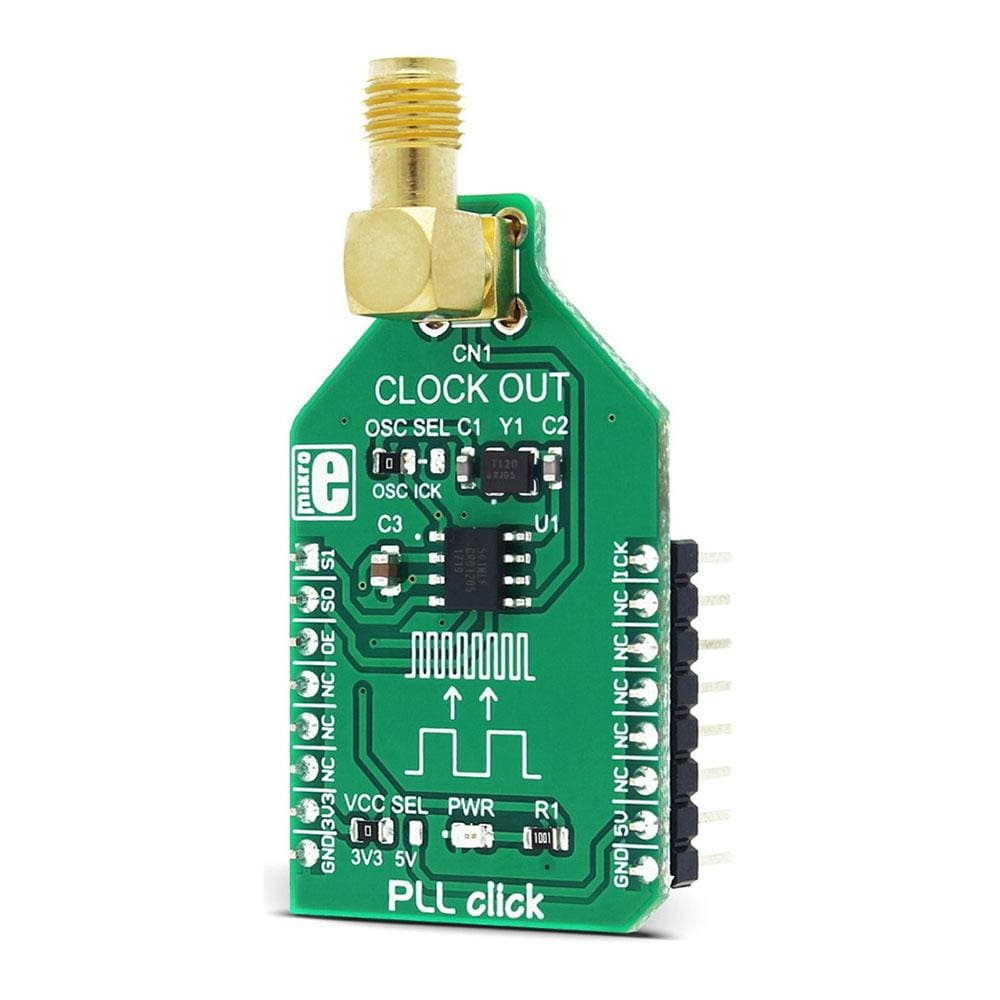
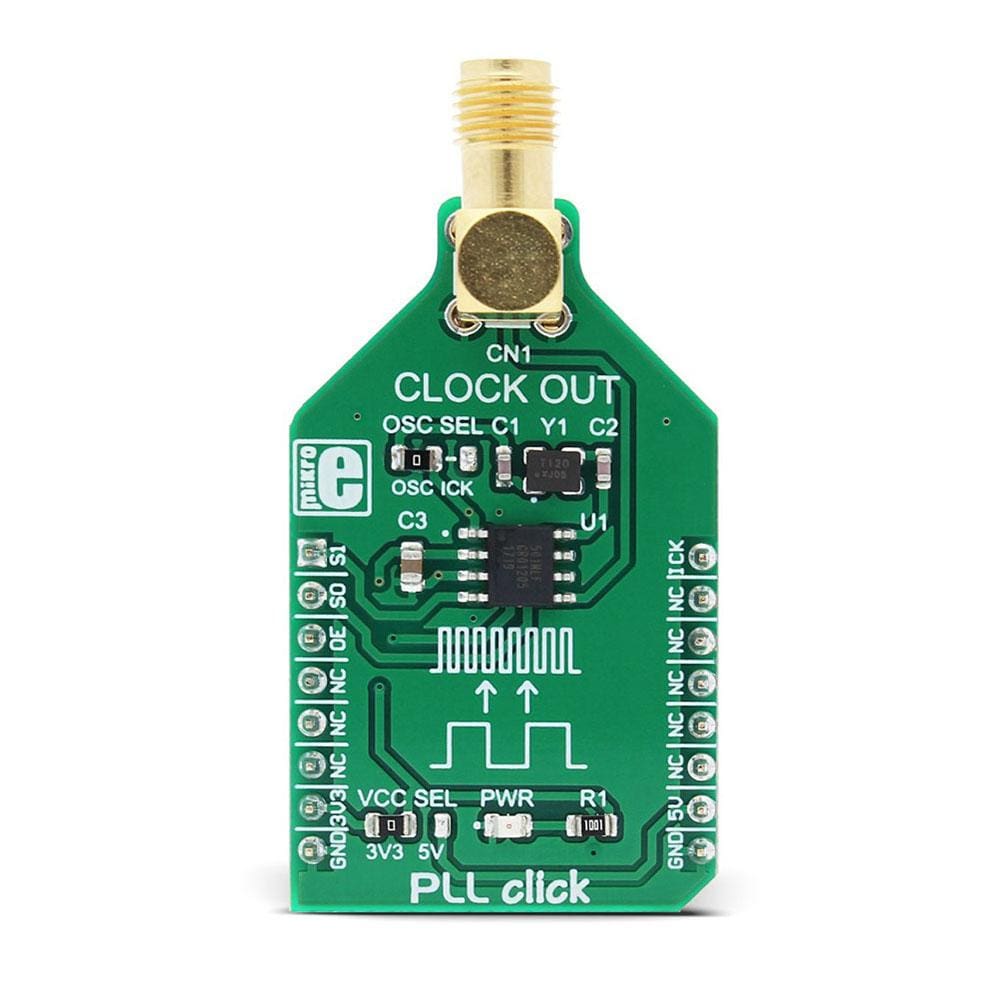
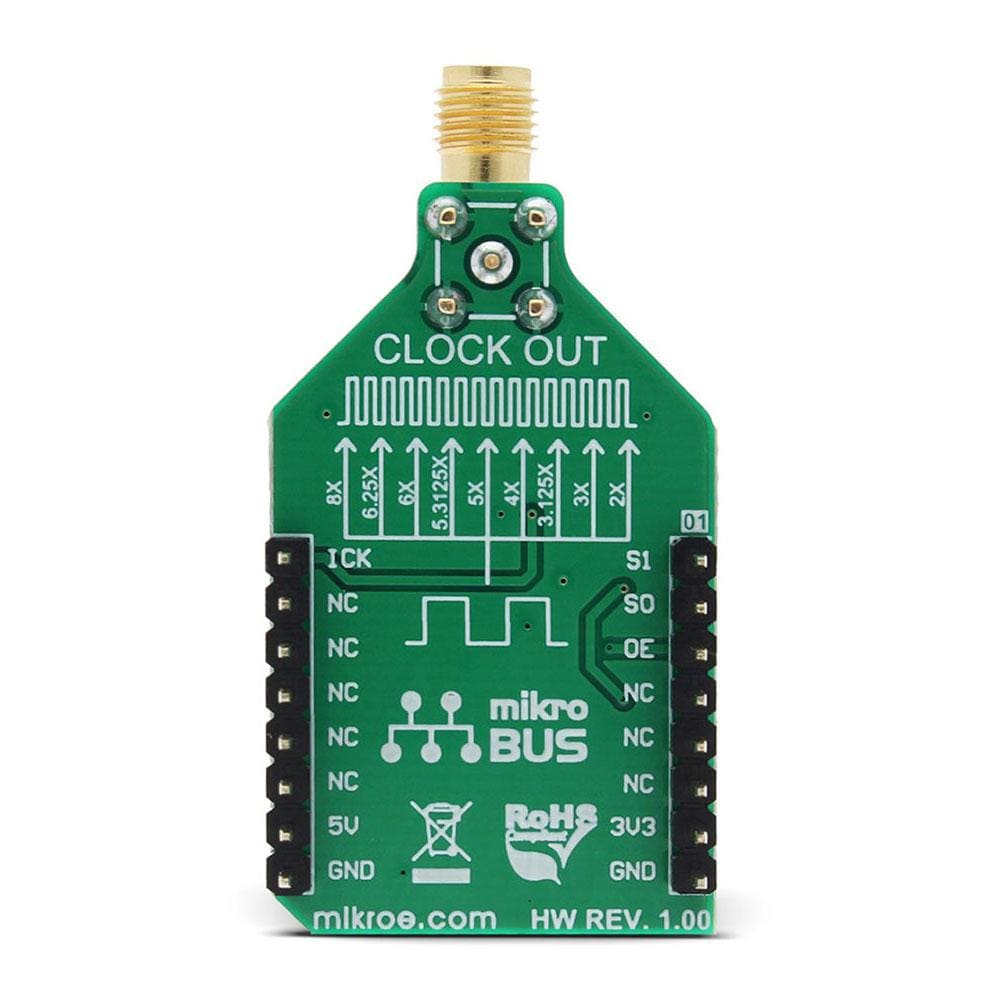
Overview
The PLL Click Board™ is a frequency multiplier that uses the Phase-Locked Loop (PLL) techniques to provide a high-frequency clock output from a cheap, standard fundamental mode crystal oscillator. In addition to this, PLL Click Board™ also offers a choice between nine different multiplication factors, programmed via states of the two input pins. The output range of the PLL Click Board™ goes up to 160MHz.
Downloads
Le PLL Click Board™ est un multiplicateur de fréquence qui utilise les techniques de boucle à verrouillage de phase (PLL) pour fournir une sortie d'horloge haute fréquence à partir d'un oscillateur à cristal en mode fondamental standard et bon marché. En plus de cela, le PLL Click Board™ offre également un choix entre neuf facteurs de multiplication différents, programmés via les états des deux broches d'entrée. La plage de sortie du PLL Click Board™ va jusqu'à 160 MHz.
| General Information | |
|---|---|
Part Number (SKU) |
MIKROE-2993
|
Manufacturer |
|
| Physical and Mechanical | |
Weight |
0.021 kg
|
| Other | |
Country of Origin |
|
HS Code Customs Tariff code
|
|
EAN |
8606018712830
|
Warranty |
|
Frequently Asked Questions
Have a Question?
Be the first to ask a question about this.

